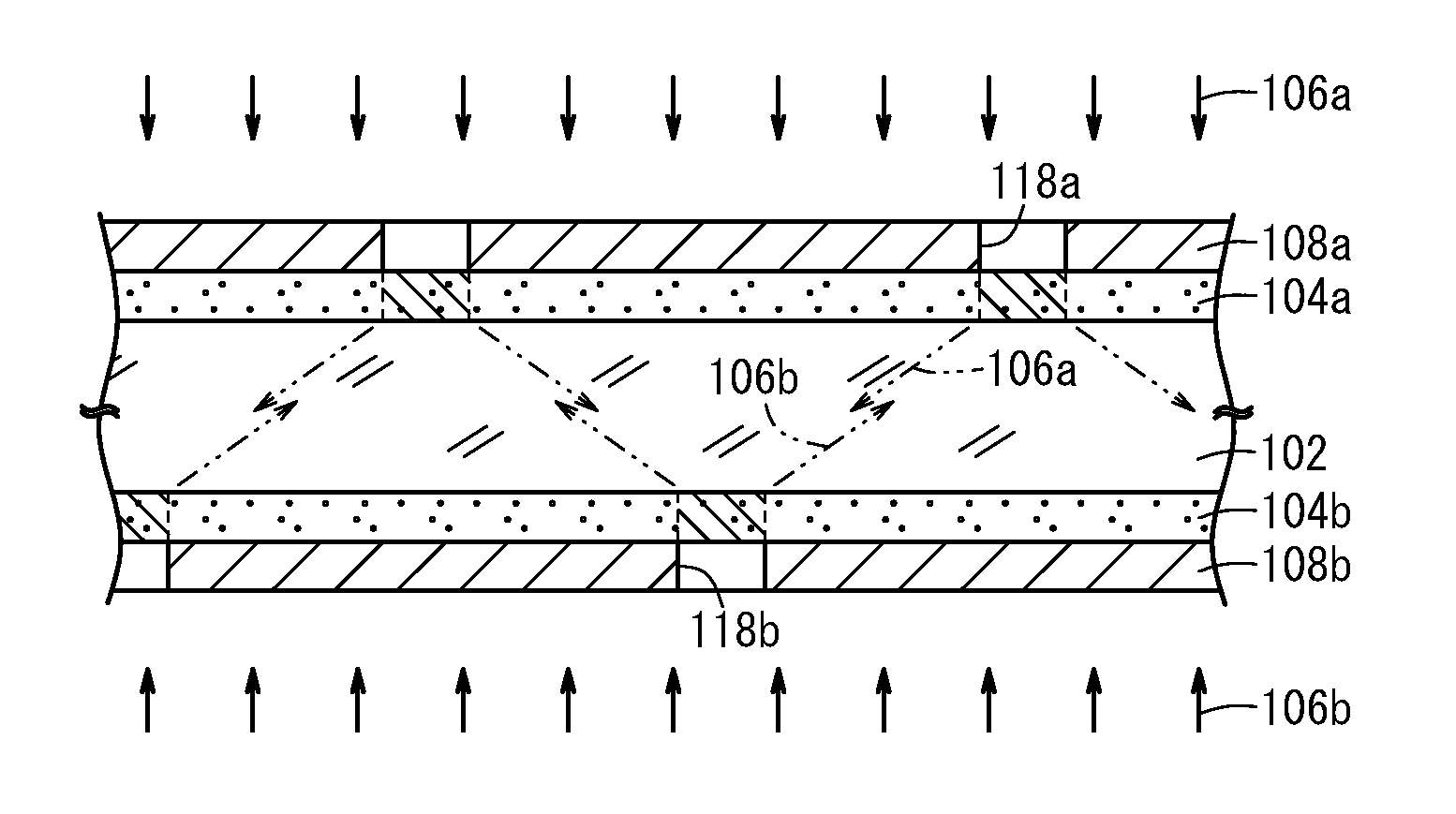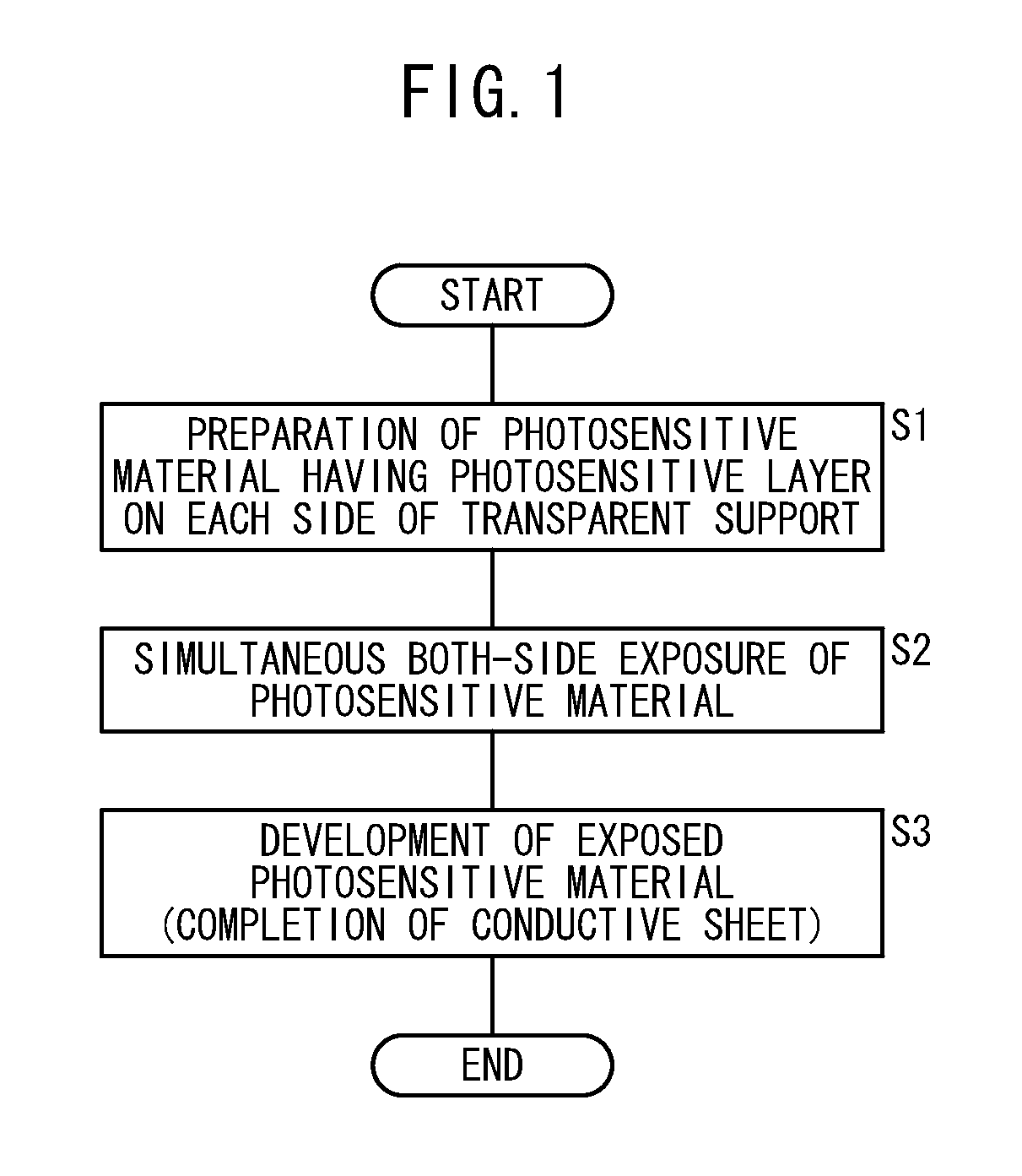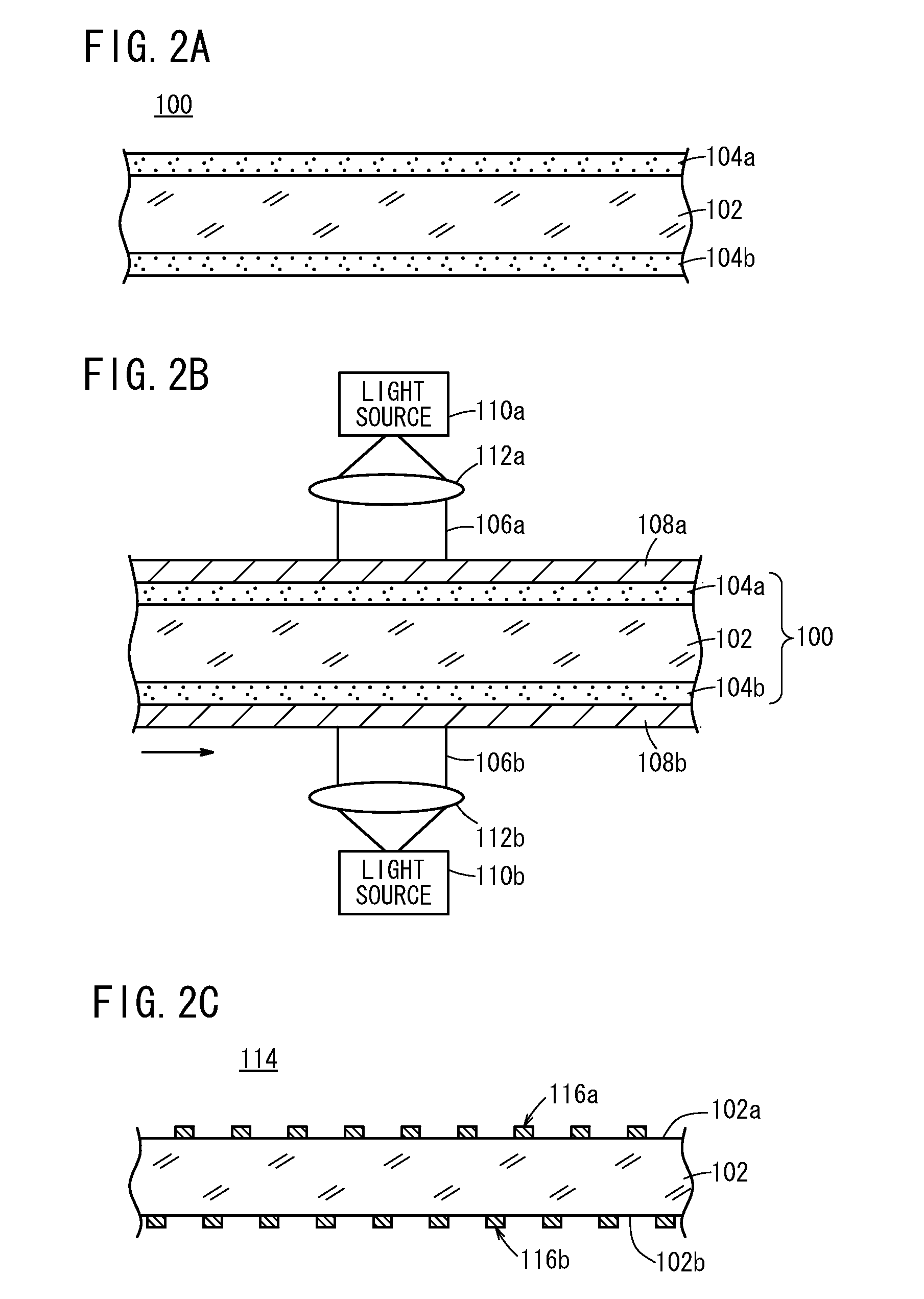Method for producing conductive sheet and method for producing touch panel
a technology of conductive sheets and touch panels, which is applied in the direction of dielectric characteristics, instruments, photomechanical apparatuses, etc., can solve the problems of inconvenient method for forming different conductives, inability to simultaneously detect two or more touch points, and difficulty in performing position detection within a predetermined operation time, etc., to achieve the effect of easy forming of electrodes and simplified conductive sheet production process
- Summary
- Abstract
- Description
- Claims
- Application Information
AI Technical Summary
Benefits of technology
Problems solved by technology
Method used
Image
Examples
examples
[0215]The present invention will be described more specifically below with reference to Examples. Materials, amounts, ratios, treatment contents, treatment procedures, and the like, used in Examples, may be appropriately changed without departing from the scope of the present invention. The following specific examples are therefore to be considered in all respects as illustrative and not restrictive.
first example
[0216]In Examples 1 to 7 and Comparative Examples 1 and 2, the applied silver amount of the first photosensitive silver halide emulsion layer 124a formed on one main surface of the transparent support 102 and the second photosensitive silver halide emulsion layer 124b formed on the other main surface of the transparent support 102 was changed to evaluate state of the simultaneous both-side exposure. It should be noted that the antihalation layers were not formed.
example 1
(Photosensitive Silver Halide Material)
[0217]An emulsion containing an aqueous medium, a gelatin, and silver iodobromochloride particles was prepared. The amount of the gelatin was 10.0 g per 150 g of Ag, and the silver iodobromochloride particles had an I content of 0.2 mol %, a Br content of 40 mol %, and an average spherical equivalent diameter of 0.1 μm.
[0218]K3Rh2Br9 and K2IrCl6 were added to the emulsion at a concentration of 10−7 mol / mol-silver to dope the silver bromide particles with Rh and Ir ions. Na2PdCl4 was further added to the emulsion, and the resultant emulsion was subjected to gold-sulfur sensitization using chlorauric acid and sodium thiosulfate. The emulsion and a gelatin hardening agent were applied to both sides of a transparent support 102 composed of a polyethylene terephthalate (PET). The amount of the applied silver salt in the silver density (the applied silver amount) was 7 g / m2, and the Ag / gelatin volume ratio was 2 / 1.
[0219]The PET support had a width of...
PUM
| Property | Measurement | Unit |
|---|---|---|
| Width | aaaaa | aaaaa |
| Width | aaaaa | aaaaa |
| Volume | aaaaa | aaaaa |
Abstract
Description
Claims
Application Information
 Login to View More
Login to View More - R&D
- Intellectual Property
- Life Sciences
- Materials
- Tech Scout
- Unparalleled Data Quality
- Higher Quality Content
- 60% Fewer Hallucinations
Browse by: Latest US Patents, China's latest patents, Technical Efficacy Thesaurus, Application Domain, Technology Topic, Popular Technical Reports.
© 2025 PatSnap. All rights reserved.Legal|Privacy policy|Modern Slavery Act Transparency Statement|Sitemap|About US| Contact US: help@patsnap.com



